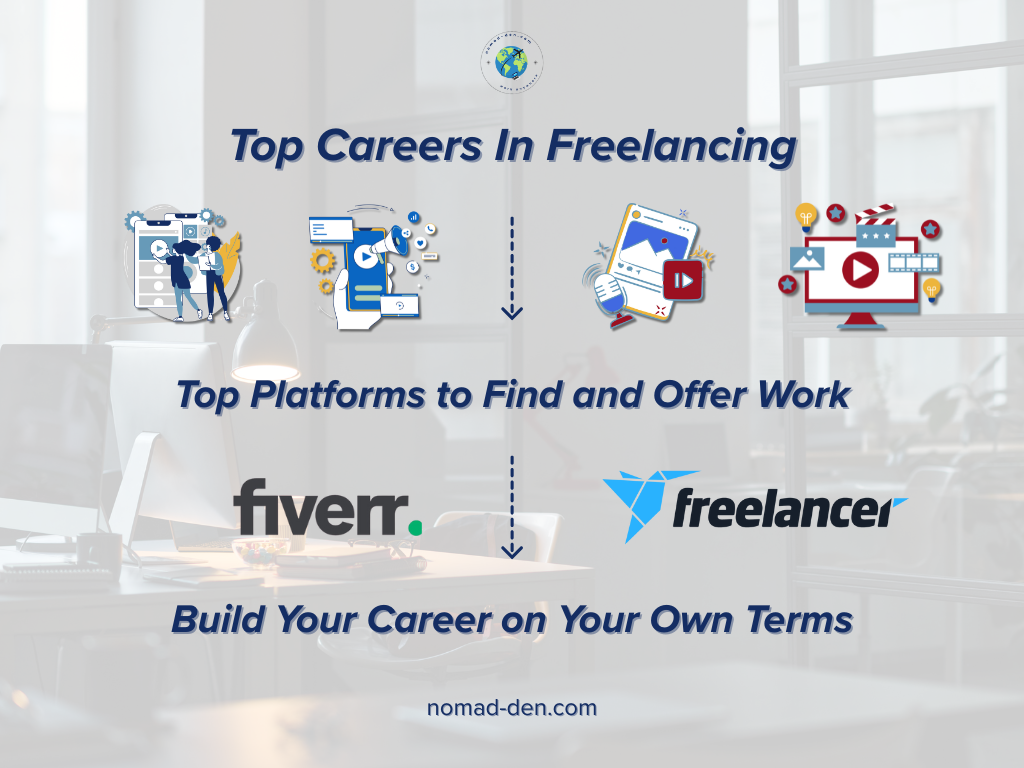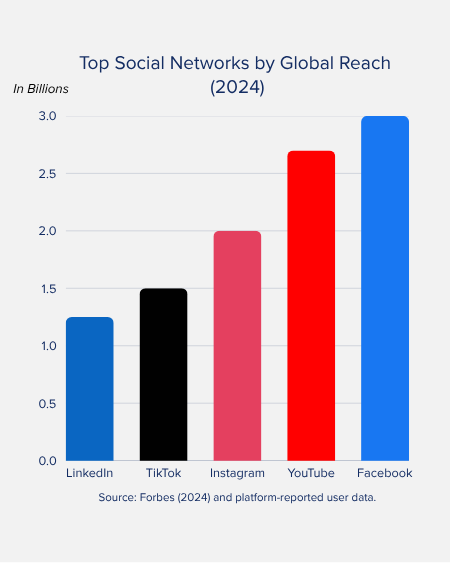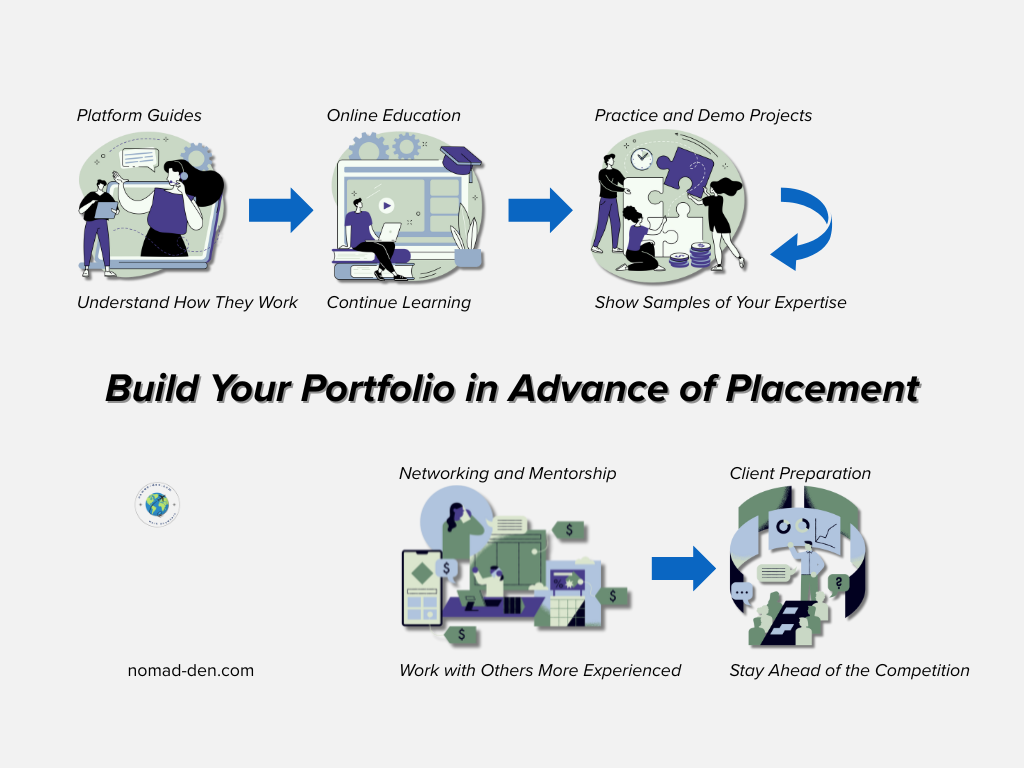
Affiliate Disclosure: This post contains affiliate links. If you click on these links and make a purchase, I may earn a commission at no additional cost to you. I only recommend products or services I genuinely believe in and that I believe will add value to my readers. Thank you for your support!
Freelance jobs work from home are more accessible than ever. Platforms like Fiverr and Upwork continue to dominate freelance websites that connect skilled professionals with remote jobs. Employers are hiring freelancing positions at an unprecedented rate in 2025. It offers them an opportunity for more flexibility in the hiring process, cutting costs and the ability to hire skilled professionals on demand.
The traditional hiring process alone, is an exhaustive feat, with hundreds of applications — or more, for some positions, and the interview process includes two-four interviews per position. Once hired, the onboarding process of establishing long-term employment for the new hire (health insurance, benefits, uniforms, gear, training, etc.) is expensive and time-consuming.
From the other perspective, creating a resume — that you are recommended to customize for every position you apply for, is cumbersome alone. Prospective candidates are applying to dozens of dozens of jobs, on average, to get one interview. Applying for a job is indeed a job in itself. For these reasons, seeking traditional employment is quickly becoming an outdated aspect of our society.
Top 9 Freelance Jobs In 2025
Since the Covid 19 pandemic, there has been an increased demand for freelance jobs to work from home — there is no commute, and there is more control over your schedule, albeit there are downsides as well. See below for a realistic overview.
With that catalyst, digital jobs became higher in demand for their inherent ability to be performed wherever they have a laptop and a reliable internet connection. Below is a curated list of nine of the top freelance jobs that are at the forefront of new trends.
1. Software Development and Cloud Computing Engineering
Software development has been around since the ’40s, but the demand has exploded with the internet. Cloud computing is part of that ecosystem, with more demand for virtual storage that improves connectivity, and more convenience than external hard drives. This technology is growing, and shows no signs of slowing down. Statista.
2. Cybersecurity
With the rising advancements in digital technology, and especially widespread growth of AI, cybersecurity is in high demand for specialized skills to combat the rising growth in cybercrime. Skills like ethical hacking, cloud security, malware analysis, cryptography, and others are digital security skills needed in today’s economy.
3. Mobile App Developer
Over half the world now owns a smart phone, and have dozens of apps installed on each. Widespread internet and mobile connectivity allow and enable users to easily open a wide variety of applications for quick access to the tools, games, education, shopping, banking, and more, all with quick clicks. Even with nearly 9 million apps worldwide, developers are still in demand.

4. Copywriting
There is no denying AI’s influence on generating text quickly and easily. However, speed does not equal quality, and AI-generated content cannot replace human emotion or nuance. As Copyblogger points out, the highest-paid copywriters aren’t just stringing words together — they adapt skills in business, marketing, strategy, and ideation.
5. UI/UX Design
UI and UX design is growing rapidly, due to the continued growth of online businesses, digital marketing platform complexity, and the rise of AI. They all benefit from improving customer design and experience that will keep people engaged, and improve customer retention. With emerging technologies like AI, AR, and VR, companies need skilled designers to create smooth, engaging, and adaptive interfaces.
6. Video Editing and Photography
Another part of the digital economy includes the mass expansion of video content. It is increasingly more common to consume information through video vs written form, with social media being on the forefront. Whether it is short-form or long-form video, they all benefit from skilled editors that can improve video quality that stands out from the rest. Employment for film and video editors is projected to grow 7% from 2022 to 2032, faster than the average for all occupations.

7. Digital Marketing
Digital marketing is also growing this year, being the primary method for the vast majority of businesses to advertise their products and services and attract more customers. According to Forbes, social media marketing skills (a segment of digital marketing) will be worth $1.5T by 2030. This segment is the largest digital marketing skill, compromising approximately 30% of the industry.
8. Content Creation
Creating various types of content: written, video, graphics, etc., goes hand-in-hand with many of the aforementioned industries here, especially digital marketing, which is the umbrella under which content creation and marketing fall. This is the act of production for the information, while content and digital marketing are the vehicle that drives it. Digital content creation is expected to triple from its 2023 valuation of $27.1B to $90.4B by 2030.
9. SEO Specialist
Like content creation, Search Engine Optimization is another type of digital marketing. As the global internet presence grows, more businesses will need SEO to attract potential customers to their site by understanding search intent. According to the Digital Marketing Institute, 68% of online experiences start with a search engine, and organic search drives over half of all website traffic. This makes SEO one of the most vital freelancing skills in 2025.

Practice while you learn with tools like KWFinder let you apply SEO concepts in real time — start exploring keywords here:
Best Freelance Websites to Find Work
Many of these careers naturally overlap and build on one another. Spotting these connections makes it easier to see where the economy is going — and how to position yourself to adapt to it. The following are the top freelancing platforms to find remote work, including all the top careers in demand mentioned within this post
Fiverr
In 2010, Fiverr was founded as a freelancer marketplace with a “$5 gig” pricing model. It has since evolved into more skilled services, offering over 300 categories. In 2013, they dropped the $5 price tag and let freelancers set their own rates, allowing them to naturally compete within their market and more broadly. Today, Fiverr stands out as one of the top platforms to find and solicit reliable freelancing work.
Fiverr makes it easy to set up your first freelancing profile and land gigs.

Upwork
Upwork evolved from the merger of two companies to form oDesk-Elance in 2013, but rebranded to Upwork in 2015. For those new to freelancing and online business or side hustles, Upwork offers a low-barrier to entry, allowing them to gain experience, build their portfolio, and find clients without through an efficient marketplace. At this point, they serve a significant freelance marketplace, with over 18 million registered freelancers globally, with 60% of them working remotely.
Freelancer.com
Freelancer.com is the world’s largest freelancing platform by number of users and projects, currently connecting over 84 million employers and freelancers globally, from over 247 countries, regions, and territories. Founded in 2004 and headquartered in Australia, they offer services in multiple languages and remain one of the most established marketplaces in the industry.

Launched in 2002, LinkedIn is one of the oldest social media platforms still in operation, designed as a professional networking site. This core functionality continues today, making it especially valuable for writers, marketers, developers, and other in-demand freelancers looking to showcase their skills and connect with businesses worldwide.
PeoplePerHour
Founded in 2007, PeoplePerHour is a UK-based freelancing platform operating in over 100 countries. With more than 3 million freelancers and £150M earned across 8,700 skills, it’s especially beginner-friendly, offering smaller projects that help new freelancers build experience in writing, design, marketing, and tech.
FlexJobs
Founded in 2007, FlexJobs is one of the most recognized remote job platforms, featuring 183,000+ listings from over 12,000 companies. Every posting is vetted by their team to ensure scam-free opportunities, earning them a 4.6★ rating backed by 14,000+ reviews.

How to Build Your Freelancing Portfolio
Two of the most important aspects employers are looking for — regardless of the industry, is the level of education is your field, and the experience of that education in action. Applying for freelancing platforms and building upon your experience there, is no exception. Taking these steps will improve your chances over time and will give you more bullet point to showcase in your digital portfolio:
- Platform Guides and Blogs – Many of the freelancing platforms mentioned here have materials that can aid freelancers in finding quality work, with advice, blog articles, or tutorials.
- Online Education – Talking condensed coursework in platforms like Udemy, Coursera, or LinkedIn Learning will improve your skills and knowledge in less time and more affordability than many brick and mortar institutions.
- Practice and Demo Projects – Job experience is always preferred, but it doesn’t have to be the only experience. Creating sample projects showcasing your skills can leverage experience and demonstrate your abilities before you are even paid for your first job.
- Networking & Mentorship – Connect with other freelancers in your niche through LinkedIn groups, forums, or communities. Many experienced freelancers share advice that can shortcut your learning curve.
- Client Preparation – Before you land your first project, plan ahead by setting up simple processes like how you’ll communicate, handle revisions, or deliver files. Being prepared helps you look professional from the start.
Building your freelancing portfolio isn’t about perfection from day one. Everyone starts without experience, but in this competitive market, showing initiative — by demonstrating your skills and how you’ll manage clients before your first contract — is what sets you apart.
Conclusion
The job market is more competitive than ever. To stay ahead of the curve, it’s important to recognize how hiring trends and workplace dynamics are shifting. Many freelancing platforms emerged in the mid-2000s — around the same time Amazon FBA started — signaling the early movement toward remote work.
The Covid-19 era accelerated that shift, making “work from home” opportunities mainstream and expanding accessibility to more careers than ever before. Today, the resources to get started are more available than ever. You know the careers. You know the platforms. To learn how to start freelancing with no experience, it’s about taking action: build your portfolio, create your personal workspace, and leverage your skills to set yourself apart from the rest.
Continue Reading Related Posts
- Top 5 Tools Every Online Business Owner Needs – Discover essential software every remote worker should know.
- Best Tools for Online Privacy and Security – Stay secure while working from anywhere.
- Funnels 101: A Brief History and Evolution – Learn how funnels work and why they matter for freelancers and entrepreneurs.
- Mangools SEO: Everything You Need to Know – A complete guide towards understanding SEO essentials, using Mangools’ suite of tools.
